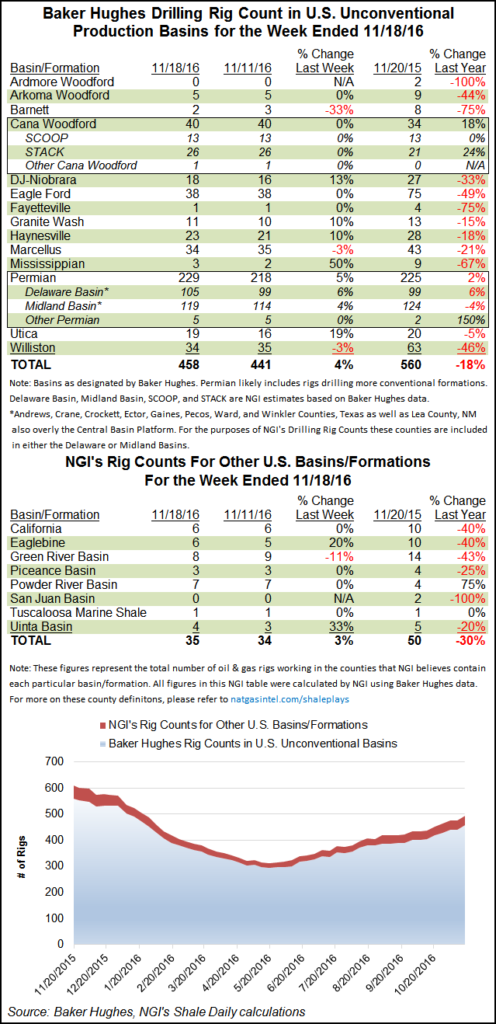Permian Rig Stampede Resumes in Earnest
Seventeen rigs returned to land-based U.S. action during the week ending Friday, and 11 of the those joined the ranks of units already running in the Permian Basin of West Texas and southeastern New Mexico. The Permian count stood at 229 at week’s end, four more rigs than were running in the play one year ago.

Overall, the United States added 20 rigs, including one in the inland waters and two in the offshore. Nineteen oil units came back, accompanied by one natural gas rig. Thirteen horizontal units were added along with seven verticals, according to Baker Hughes Inc.
The Permian led the pack of plays by far, with the Delaware sub-basin adding six rigs to end at 105 and the Midland adding five to end at 119. During the preceding week the Permian took a breather and held its count steady.
In the latest count, the Utica Shale saw the addition of three units to end at 19, and the Haynesville Shale picked up another two rigs to end at 23, nearing its year-ago tally of 28. The Denver-Julesburg/Niobrara also added two units, leaving it with 18 running at week’s end.
Texas led the states, adding a net of eight rigs, followed by Louisiana and Oklahoma, which each saw a net gain of four. Those additional Oklahoma rigs must have been added outside the Cana Woodford as the rig census for that play was flat with the previous week.
North Dakota — home of the Bakken Shale — dropped one rig to end at 34. Lynn Helms, director of North Dakota’s Department of Mineral Resources, said recently that the Bakken will have a tough time competing with the Permian for capital allocation.
Canada added 11 oil rigs and subtracted three gas units, leaving it with 100 oil rigs running and 84 gas rigs. Ten rigs were added in Saskatchewan alone.
The North America rig count increased by 28 to end at 772, still a ways off from the year-ago tally of 923.
© 2024 Natural Gas Intelligence. All rights reserved.
ISSN © 2577-9877 | ISSN © 2158-8023 |
